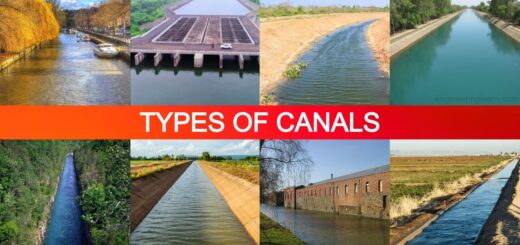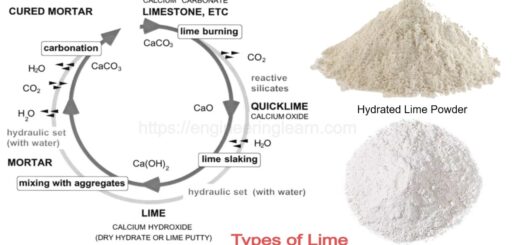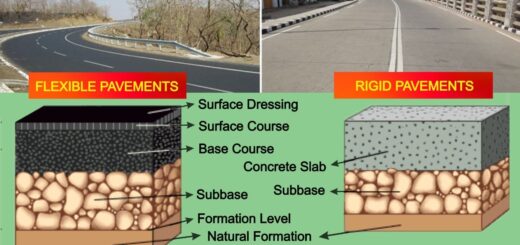10 Types of Concrete Finishes – How to Finish Concrete and Why it’s Important? [Explain with Complete Details]
![10 Types of Concrete Finishes - How to Finish Concrete and Why it's Important? [Explain with Complete Details]](https://engineeringlearn.com/wp-content/uploads/2023/01/Concrete-Finishes-1024x539.jpg)
Introduction
10 Types of Concrete Finishes – How to Finish Concrete and Why it’s Important? [Explain with Complete Details]: – There are different factors that impact the strength of concrete and the ease of finishing. The proportion of the raw materials additionally plays a significant part here. The proportion of every one of them is liable for the strength and finish of the concrete.
If the water-concrete proportion is higher, it will give a brilliant smooth finished surface yet then again, the compressive strength of concrete will be compromised.
On the off chance that aggregate content is higher, the concrete strength will be higher however it can make finishing a piece trickier. Thus, it depends on the ratio of materials selected for concrete.
What is Concrete Finishes?
A smooth surface formed with screeds and trowels is the most fundamental type of concrete finishes. Concrete finishes work screed is utilized to level off the concrete surface following it has been laid in form. Screeds are frequently made from long pieces of metal or wood that are pulled and pushed across the concrete surface to eliminate additional concrete and fill in the gaps. Concrete is a flexible construction material that is used in an extensive range of residential, business, and industrial applications all over the world. Concretes’ strength or solidarity is on the inside, yet its beauty is on the outside.
How to Finish Concrete?
Concrete finishing is the process wherein a smooth and durable surface is provided. The step-by-step techniques to smooth the concrete is as per the following:-
1. Pour the Concrete into the Required Size
Blend the concrete properly in the mixing machine according to the required grade. Then pour the concrete in the required size and compact or reduce it in an appropriate way with the goal that all the air void will be removed.
2. Smoothen the Surface of the Concrete
The wooden travel for float should be used to smooth the external layer of the concrete. This is an exceptionally complex work which requires skilled workmanship.
3. Utilization of Broom to finish the Outer layer of the Concrete
Broom is commonly used to finish the top surface of the concrete which will assist with making the concrete surface slip-resistant.
4. Process of Curing
Curing is perhaps one of the significant parts of the most widely recognized way of finishing. The simplest method which is utilized for the curing is to with the concrete surface and cover it with plastic sheeting.
Why Concrete Finishes is Important?
Below are some points which suggest why concrete finishes are important:-
A) Protects Concrete from Damage
Concrete is exposed to the elements. Even oil spills and stains can occur, depending on the area it is laid. These scenarios can damage your concrete, hence safeguarding it with a sealer is significant. A Concrete sealer will lock out dampness, diminishing damage that comes from freezing and thawing.
B) Helps Maintain Its Colour
Sealing your concrete adds appeal to the surface. In the event that you have added color to your concrete, the sealant would totally be recommended. Discoloration can happen in the sun and components, making your concrete look dirty as well as old.
C) Protects Against Harsh Weather
There are several tiny gaps in concrete that allow water to flow inside the material. At the point when this happens, the frozen water scrapes off little flakes from the highest point of the surface. Add de-icing salt into the equation and you have a recipe for serious damage, If the cracks get larger when left untreated, disintegration will prompt serious damage.
D) Increases Life Expectancy
Keeping your concrete looking great is one thing. Keeping it functional is another. At the point when your exterior concrete is repeatedly exposed to the harsh components, it gets weakened. Cracking and scaling problems can occur.
E) Easier Cleaning and Maintenance
Dirt and liquids can stay on the surface. Sealing can likewise make sweeping and wiping far simpler, permitting you to keep your concrete in good shape.
F) Improves Aesthetics
Concrete sealers come in a range of finishes, making them look cleaned and polished. They add the perfect proportion of shine to make it look more classier and new for much longer.
Types of Concrete Finishes
There are different types of finishes that can be applied to a fresh concrete surface. Various types of finishes are reasonable for various locations and they have alternate purpose for which they are applied.
For instance, concrete segments have a specific type of finish that is unique in relation to the finish applied to concrete floors in a parking area.
1. Trowelled Finish: ( Types of Concrete Finishes )

It is one of the most fundamental types of concrete finishes. Trowelled finish is exceptionally common and is seen at construction sites for concrete elements like a rooftop slab.
When the concrete is poured into the formwork, it is flattened with a screed. It is then worked with a trowel to make a smooth, fine concrete surface.
The hand trowel has a flat or level board or a blade fitted with a handle. It is utilized in a pull and pushes motion off the concrete surface. This process is rehashed until a smooth and fine concrete surface is obtained. A hand trowel is utilized where the work is in moderately lesser quantity and on more smaller undertakings.
A mechanical trowel or trowel machine contains blades or sharp edges that are in direct contact with the concrete surface. The blades make the concrete surface smooth and fine. A trowel machine is utilized for large ventures where the quantity of work is somewhat large.
2. Salt Finish: ( Types of Concrete Finishes )

The salt finish is utilized around swimming pools and other such wet regions. It is a finely textured, slip-resistant surface, prepared by the application of rock salt to the outer layer of uncured concrete.
The rock salt is sprinkled on the wet surface of concrete, which creates mall pits on it. The rock salt is washed away after some time. It leaves behind a finely textured, slip-resistance surface.
3. Broom Finish: ( Types of Concrete Finishes )
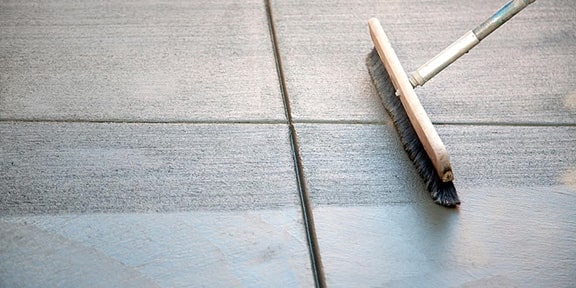
A Broom finish concrete surface is a roughly textured surface. The concrete surface is prepared or arranged like a trowel-finished surface.
At the point when the concrete surface is prepared, a broom is dragged across the surface to give it a rough surface. The unpleasant or rough surface provides traction to the surface and makes it anti-slippery. Broom finishes are the best for parking lots and driveways and, surprisingly, in the areas where it is plausible of slipperiness as a result of the presence of water or moisture.
4. Exposed Aggregate Finish: ( Types of Concrete Finishes )

The exposed aggregates finish is prepared so that the aggregates are visible on the concrete surface. In this finish, the top layer of concrete is washed away to permit the aggregate to show on the other side. Various types of aggregates can be utilized for this type of concrete finish like attractive stones, seashells, colored glass, granite, and so on.
To get this finish, concrete is poured, evened out, and trowelled to no one’s surprise. Then it is dealt with for the time being with a synthetic that impedes the solidifying of the concrete surface. Then, the top surface is washed away with water, which exposes the aggregates on a superficial level.
The primary goal to provide exposed aggregate surface is its engaging quality. Aesthetically it looks beautiful and it likewise gives a protected, anti-slip surface. It is highly suggested for walkways and yards.
5. Stamped Concrete Finish: ( Types of Concrete Finishes )

A sort of concrete surface is for the most part used to enhance aesthetics and decorative purposes. Stamping is a strategy that adds texture and design to the concrete surface.
The designs and textures are made utilizing panels with designs, put on the concrete surface. Concrete stamps are accessible in different designs like stone, brick, and numerous different designs. Now and then, colors are added to make it more alluring and decorative.
6. Stained Concrete or Colored Concrete Finish: ( Types of Concrete Finishes )

Color is added to concrete to give it a look that matches the design of the surrounding structure. Blend added shades or post-fix staining, the two of which are referenced underneath, can be utilized to accomplish this. To produce a pleasant look that matches the general climate, the hued finish of the substantial is accomplished through a blend of added colors or post-fix staining. Shade or strains can be utilized to make a hued finish on a concrete surface. Shaded concrete with colors can be made by blending the shades straightforwardly into the substantial blend prior to pouring.
Stains can be applied to the cement of all ages to accomplish a more intense colored finish, bringing about stressed-colored concrete. The application of stain is typically followed by the application of a sealant to safeguard the concrete surface.
7. Polished Concrete Finish: ( Types of Concrete Finishes )
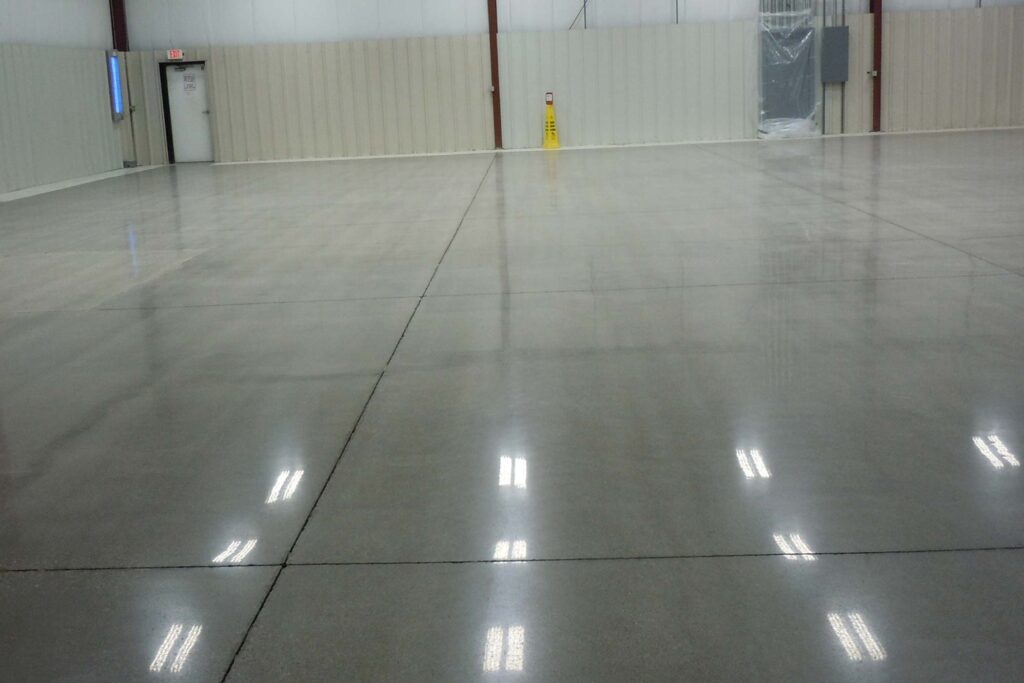
The polished surface is provided for additional assurance, simple cleaning, and an engaging look. Floors grinders are utilized for polishing concrete surfaces. The floor grinders have heavy-duty jewel abrasives embedded into them, that assist in polishing the floor surfaces.
8. Concrete Stain: ( Types of Concrete Finishes )

Concrete’s color can likewise be changed with the utilization of different staining agents. The utilization of acid as a staining agent is a frequent practice. Colors are often restricted to neon-bright, to some degree sensitive tones, like cement pigments. Water-based (acrylic) staining can be utilized to make an extensively more extensive scope of varieties, including concrete pigments. Stains can be applied to any age of concrete, albeit the colors are generally more intense assuming that the stain is applied not long after the concrete has been laid. The application of stain is normally followed by the use of a sealant to safeguard the concrete surface.
9. Swirl Finish: ( Types of Concrete Finishes )

Swirl finish is an advanced type of broom concrete finish. In this, utilizing float or trowel uniform swirled imprints or arc patterns are made across the outer layer of the wet concrete. The finished result or outcome is a subtle pattern that adds more visual effects. Swirl finish is usually adopted for outdoor applications like driveways, decks, and so on. Very much like a broom finish, it gives generally good slip resistance explicitly during the wet season.
10. Pigments Concrete Finishes: ( Types of Concrete Finishes )
Utilizing pigments to color concrete is a clear procedure that includes blending the pigments directly into the concrete blend prior to pouring. pigments are supplied in liquid form or as dissolvable packets that are “ready to blend.” In both circumstances, the pigments are combined with the other concrete materials in the mixer. The range of colors accessible is normally restricted to earthy colors and tans, nonetheless, greens, blues, and grays are also accessible. It’s critical to preserve pigmented concrete sufficiently sealed all through its life span to keep away from water infiltration, which can fade the pigment.
Benefits of Concrete Finishes
Concrete finishes accompany a bunch of advantages and could be a magnificent decision to suit your requirements. Some of the benefits of concrete finishes are: –
- Durability: Properly constructed concrete finishes outlast different sorts of finishes.
- Stiffness: Concrete finishes are remarkable structural elements for carrying imposed loadings. They don’t deflect under applied loadings, consequently avoiding deformation problems.
- Energy efficiency: Concrete finishes have a high thermal mass. This works on the internal environment and lessens energy use required for thermal solace.
- Speed of construction: Concrete finishes are easy and quick to construct.
- Damp resistance: Concrete finishes are nonabsorbent, accordingly offering adequate water resistance.
- High fire resistance: Concrete is non-combustible, and concrete finishes in this way offer high fire resistance for concrete surfaces.
Conclusion
The concrete is a versatile and flexible material in its fresh state and can be finished in many types according to the desired appearance, for example, Trowel finish, Broom finish, Salt finish, Exposed aggregate finish, polished finish, and many more. There are numerous ways of adding an aesthetic appeal or enticement to your concrete surfaces utilizing concrete finishes. Finishes fundamentally depend upon utilization and expenses. Taking into account what you need, you can pick the best finish for your venture. It means a lot to finish the concrete surface to maintain the wear and tear of the surface, protection from seepage or leakage of water, and to have an even surface.
Content Source: – dailycivil, civiconcepts, civiljungle, proest, trpreadymix
Image Source: – idealwork, thundercrete, dur-a-flex, conceptconcrete, evolveindia, butterfieldcolor, creativemaintenance, concretecamouflage, theconstructor
